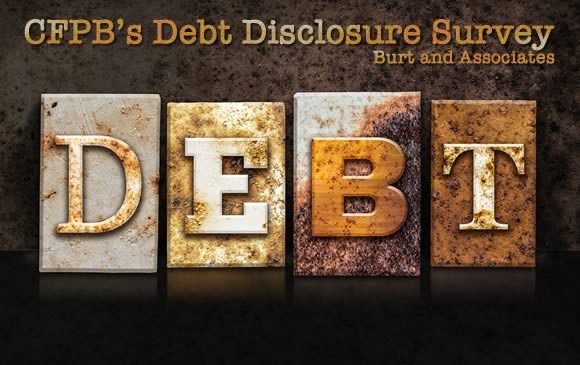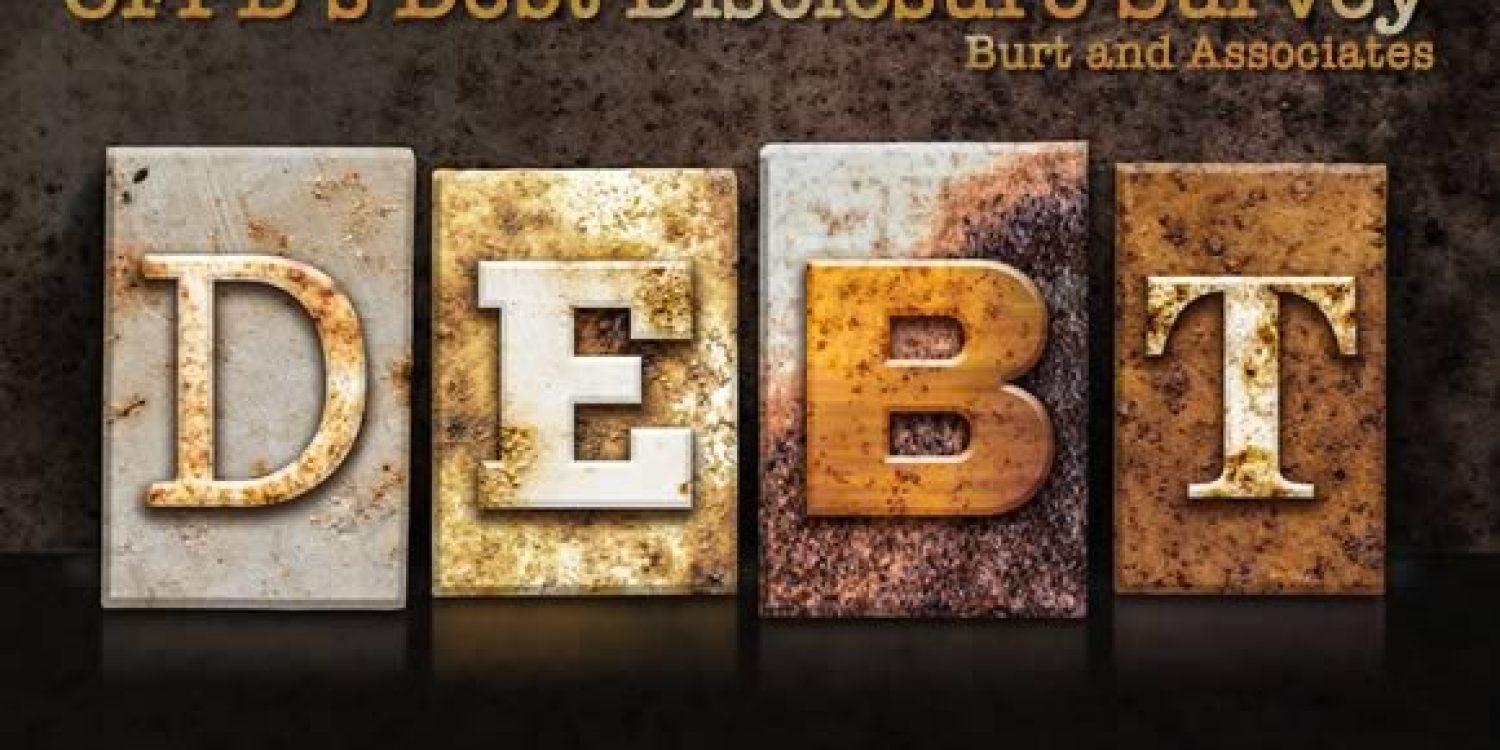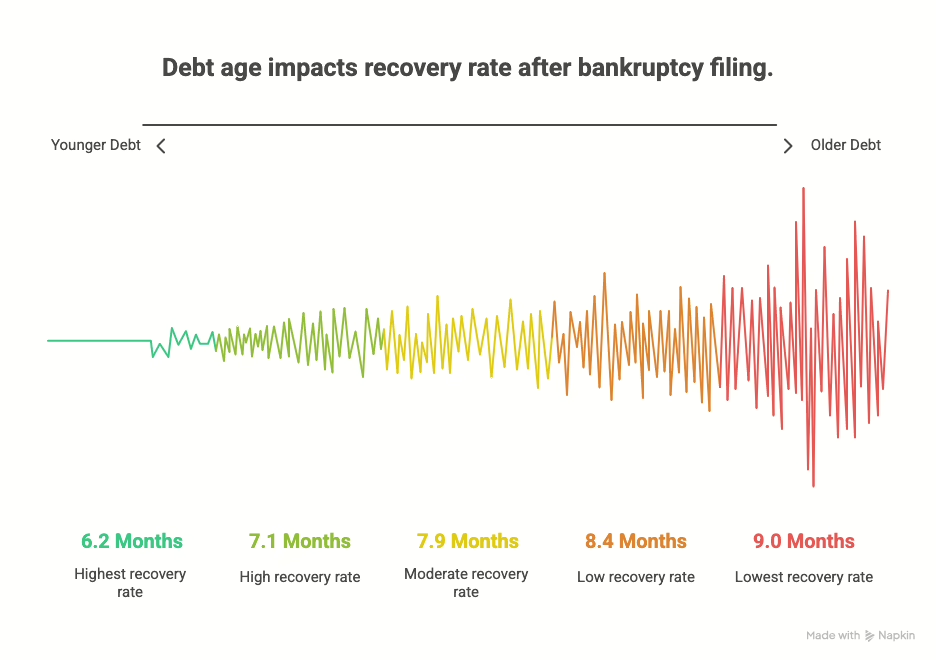Recently, the Consumer Financial Protection Bureau (CFPB) published a survey in which they asked over 8,000 individuals their thoughts on debt collection disclosures. This survey attempted to determine whether consumers understood these disclosures and whether they allowed individuals to make sound financial decisions.

The CFPB was attempting to gather information related to the following questions:
1.- Is it necessary for the Bureau to collect information in order to function properly?
2.- Is the Bureau correctly able to estimate how difficult and time-consuming it will be to collect this information?
3.- How can the Bureau enhance the clarity, usefulness, and quality of the information it collects, and
4.- How can the Bureau make this information gathering easier on respondents — and how can the use of technology assist in this data collection?
While the survey is still ongoing (the CFPB is requesting for respondents to answer through the beginning of March) it’s important to note that several documents have been released in conjunction that can shed more light on the intentions behind these questions. Four important takeaways are worth noting:
1) The CFPB is focusing on validation notices, consumer rights disclosures and disclosures for time-barred debts
In addition to the survey itself, the CFPB released several support documents with more information about what it is hoping to discover. In one of these documents, it discloses more information on three main issues the Bureau is concerned with.
The first issue is whether or not more information should be supplied in the initial validation notices that are sent to debtors. As you know, when a consumer receives a letter, they have certain rights that pertain to when and how they can verify that debt belongs to them, and what information they can request. The Bureau is concerned that these letters might not state this sort of information clearly enough.
Second, the Bureau is also wondering if more information should be given to consumers about their rights in general. In many cases, consumers only receive their initial validation notice. In addition to this notice, though, many other rights protect consumers and creditors alike. Many people are unaware of these rights and how they pertain to them.
Third, the Bureau is asking about whether or not consumers should also receive notices about debts owed that have already passed the statute of limitations. This time-barred debt cannot legally be pursued, and yet in many states, these debts can be “revived” under various circumstances.
The Bureau has published sample validation notices that it will use in this survey. Copies of these sample letters can be found here. These different samples are all similar, with only minimal differences. However, the only real disclosure that is different is the one that concerns the notification regarding time-barred debts. Other areas, such as the validation notice, the notice of consumer rights, the mini-Miranda, and debt itemization are all pretty much the same.
2) The CFPB
is moving towards using electronic disclosures when applicable
One thing the Bureau is interested in finding out is how effective and
efficient it would be to start moving towards electronic disclosures. On the one hand, this seems like a good move,
as more and more of the world is leaving older forms of communication, such as
snail mail, in the past. Many consumers simply don’t open their mail anymore,
especially if it’s from an unrecognized address or sender. The CFPB would like
to see if using electronic means would get creditors a better return, and be
easier and more user-friendly for debtors.
One of the main issues the Bureau is concerned with, however, is the topic of spam. Because many people use aggressive spam filters, it is very easy for all electronic notifications to get lost because of these filters. To that end, the Bureau has included a couple of questions on these surveys that specifically aim to find out how consumers treat their spam emails. With this information, it might be possible for the Bureau to learn how to get emails in front of the people who need to see them most.
3) When it
comes to validation notices, the CFPB still prefers the tried-and-true “Tear
Off” at the bottom
For several years now, the Bureau has included a tear-off section at the bottom of validation notices that give the consumer an option to dispute the debt for one or more reasons, to submit a payment or to request more information. Since then, the CFPB still seems to prefer providing this section as an option, as these still appear in the latest sample validation notices that have been sent out as a part of this survey.
One thing that has been noticed, though, is that even though these tear off sections provide consumers with several different options, there is currently no tear-off option included that informs creditors that the debtor recognizes and confirms the debt, but cannot currently pay due to financial hardship. This is technically not a dispute but is still important information. This sort of information is necessary for creditors to know, as they are usually able to give debtors several choices on how to move forward — choices that they can offer only if they are aware that there is a problem in the first place.
4) Don’t
expect any delay in the CFPB’s debt collections rules
Because of the time table proposed for collecting and analyzing answers, many
people wondered if that would push back the CFPB’s announcements concerning its
new rules. As of right now, though, that does not seem to be the case. In a
series of statements, the Bureau indicated that any new or altered rules are
not necessarily dependent on information collected through this survey and that public notices and comments can
be taken at a later date if needed.
What Does This Mean To You?
Now that you know more about the survey, it’s important to know how it could affect you. In the short term, it doesn’t appear that there will be any immediate differences. However, it’s not inconceivable to think that this survey could lead to a future change in the overall method of delivery for validation notices, as well as some of the information that these notices contain and the rights that consumers have about them.
If you would like to know more, we at Burt and Associates can help. Please don’t hesitate to contact us today.
Commercial Collection Topics
- Collection Agencies: Why Staying in Compliance is Good Business Around 4,000 debt collecting agencies are operating in the U.S. With that many agencies, choosing what is best for a...
- California Debt Collection Compliance Updates: A Guide for Businesses In this episode, we explore the latest developments in California debt collection compliance. With the Department of Financial Protection and...
- What Does a Debt Collector Do? When you think of debt collectors, it may conjure up words like; bully, sleazy and annoying. Recently in the news,...
- Identifying Past-Due Accounts: A Guide for Business Owners and Financial Managers Late payments and past-due accounts can strain your business's cash flow and hinder growth. In this guide, we dive into...












